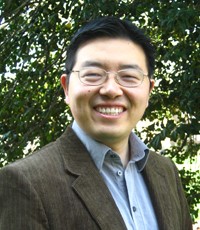One-Component Nanomedicine
Honggang Cui, Assistant Professor
Department of Chemical and Biomolecular Engineering, Whiting School of Engineering, and Department of Oncology, School of Medicine, The Johns Hopkins University
The creation of vehicles for the effective delivery of hydrophobic anticancer drugs to tumor sites has garnered major attention in cancer chemotherapies for several decades. Current approaches focus on the use of nanosized carriers, whereby the drug’s pharmacokinetic properties and biodistribution profiles are manipulated by encapsulation within, or by conjugation to the carrier. These carrier-based nanomedicines are inherently multicomponent systems that contain well-defined nanostructures as the delivery vehicle, one or more active pharmaceutical ingredients (APIs) as the therapeutic agent, and sometimes stealth and/or bioactive moieties to prolong circulation and to facilitate preferential accumulation at target sites. In most cases, each component is developed individually, and then combined to form a nanomedicine through a series of formulation procedures and conjugation methods. Although many of these nano-formulated medicines have shown much improved in vivo efficacy relative to that of the free drugs in animal models, further optimization of these nanomedicines to achieve the desired pharmacokinetic profile has proven challenging due to the interdependence of each individual component. This difficulty in improving and optimizing nanomedicine formulations is regarded as one of the major hurdles for the development of clinically useful nanomedicines for more effective cancer treatments. One possible solution could be to blur the line between the carrier and the drug by optimizing the nanomedicine construct as one integral component. In this presentation, I will detail our rational design of monodisperse, amphiphilic anticancer drugs—which we term drug amphiphiles (DAs)—that can spontaneously associate into discrete, stable supramolecular nanostructures with a high and fixed drug loading. These drug-made nanostructures are essentially one-component nanomedicines (OCNs) because they contain only one type of chemical substance. Depending on the number and type of the drug in the molecular design, the resulting nanostructures could assume various morphologies, such as nanofibers, nanotubes or toroids. Therefore, through molecular design of the building units, one could potentially gain control over the structural features and physicochemical properties of the resulting nanomedicine. Our results also suggest that formation of nanostructures provides protection for both the drug and the biodegradable linker from the external environment and thus offers a mechanism for controlled release.
 Brief Biosketch
Brief Biosketch 